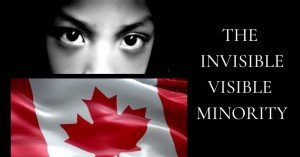
As we move through the implications of Systemic Racism on people’s lives, it is critical that we consider the impact of state-run institutions such as jails and prisons.
Across our country, people of all races are sitting in prison cells. How and why did they get end up here? The fact is, virtually every person has done something for which they could be criminalized. A person’s race, gender and class are all aspects of identity which directly impacts the likelihood of them being cast by the long net of criminalization and ultimately, institutionalization.
As we have seen, from the moment a racialized person is born, they are forced to endure varying degrees of racial discrimination and marginalization.
As of 2017, Indigenous children accounted for 50% of children in state care. These disproportionate and cyclical experiences of state interference are due in large part to lasting legacies of colonial violence which have led to intergenerational victimization of Indigenous families. Once a child enters into state care, they have entered a system in which they are inherently over policed, underserved and under protected, thus more likely to involuntarily continue this cycle of institutionalization.
Consequently, at some point early on in their lives, these young people are likely to come into contact with state intervenors known as police officers. Unfortunately, these interactions can and often do result in the first step into the carceral systems revolving door. Particularly, in the context of race, those who are Indigenous, Black and Muslim are disproportionately represented in virtually all state-run institutions.
Black people are overrepresented by 300% versus their population and for Indigenous people that number jumps to 500%. Between 2015 and 2016, Black people accounted for 10% of Canada’s prisoners. Further, between 2018 and 2019, Indigenous peoples represented 28% of the country’s total prison population.
The prison populations of Muslim Canadians are also on the rise. Between 2018 and 2019, Muslim prisoners were 7.73% of the prison population. In total, 7.2% of Canada’s population identify themselves as Muslim, Hindu, Sikh and Buddhist.
Further, in the last five years alone, the total rates of Indigenous women in prison has increased by nearly 85%. In 2011, 63% of women in federal prison were Indigenous. Even more disturbingly, this number reflects an increase of 85.7% from the past decade. This is largely due to the fact that Indigenous women often receive longer sentences which restricts any meaningful connection to their community or family, including their children.
This family disconnection is only worsened by the fact that approximately 50% of women classified as maximum security prisoners are First Nations, Métis or Inuit. Further, 31% of prisoners is segregated conditions are Indigenous. In addition to the disproportionate number of Indigenous women in prison, racialized, namely Black Canadians are far more likely to be arrested, subsequently charged and sentenced to longer term sentences.
This disconnection from community directly impacts the 7.7% of the Canadian population who under the age of 14 and are of Indigenous descent, particularly when it means they are forcibly separated from their mothers from a very young age.
As we continue to demand justice for all and the need to eradicate Systemic Racism, we cannot forget about the institutions to which those who are racialized, most often who have been victimized and who are socially marginalized are relegated.